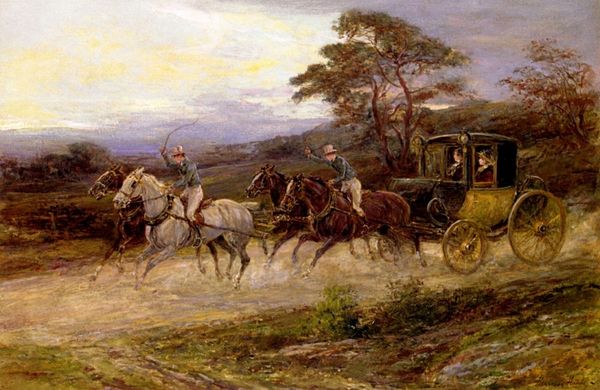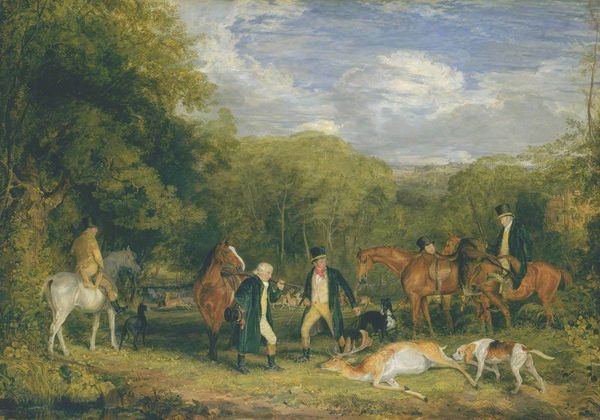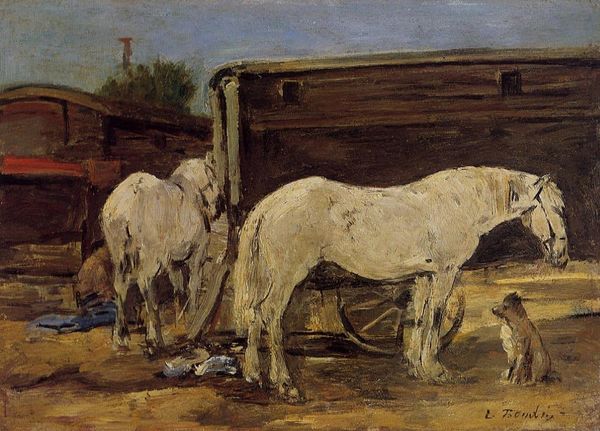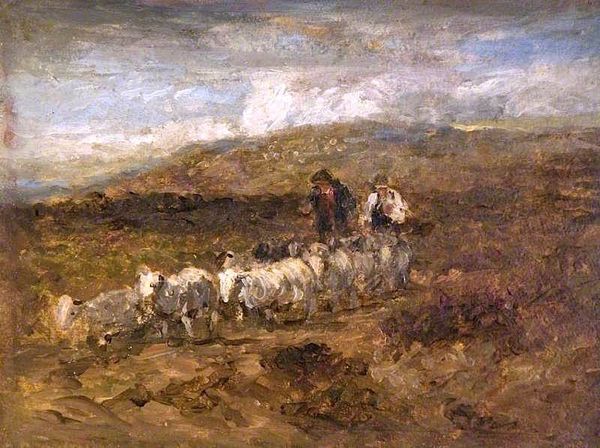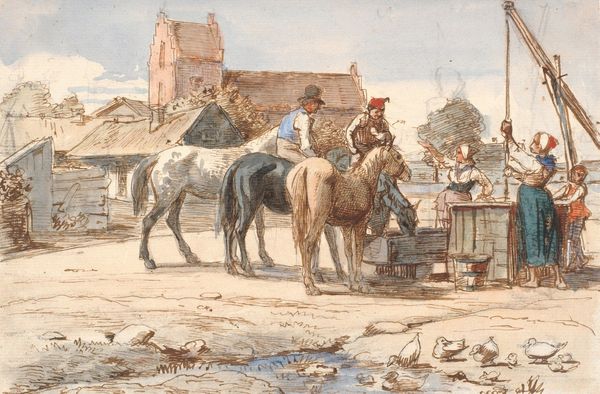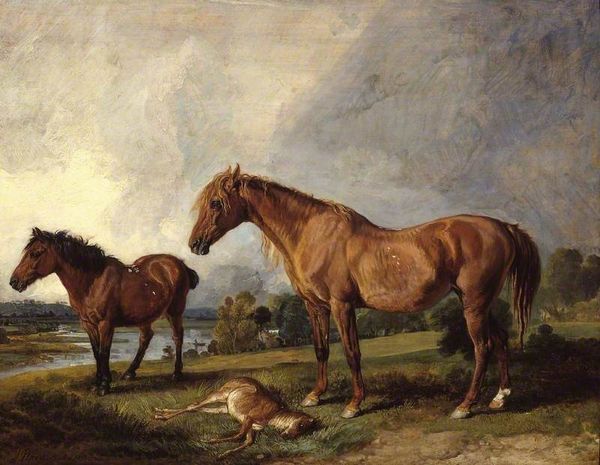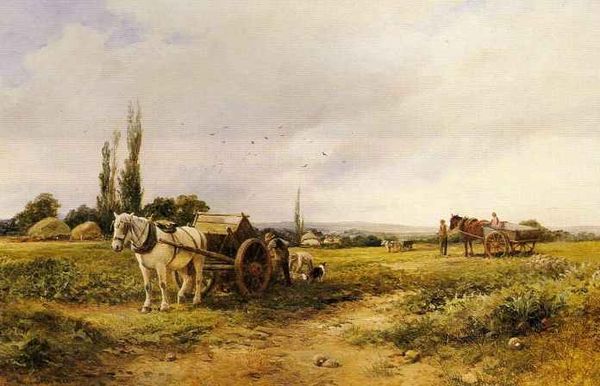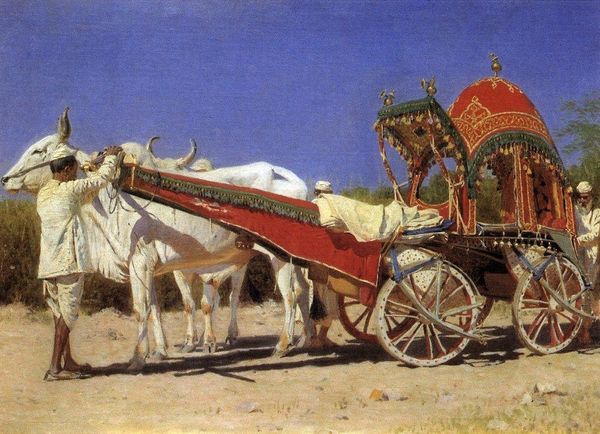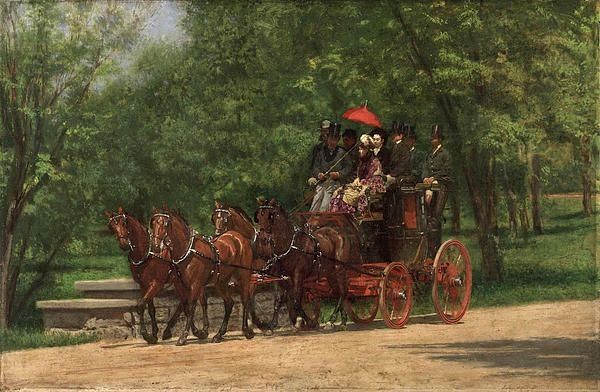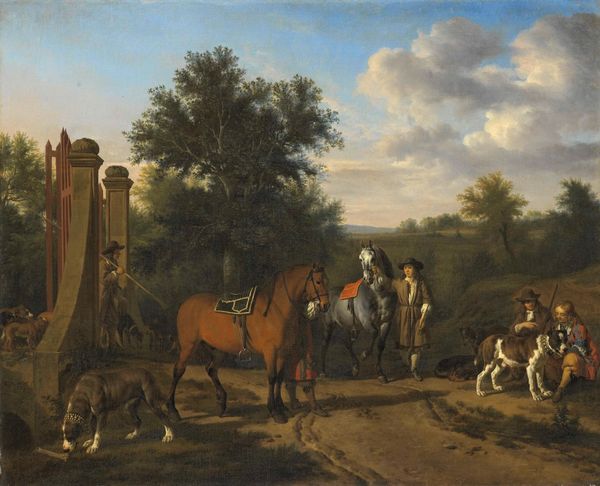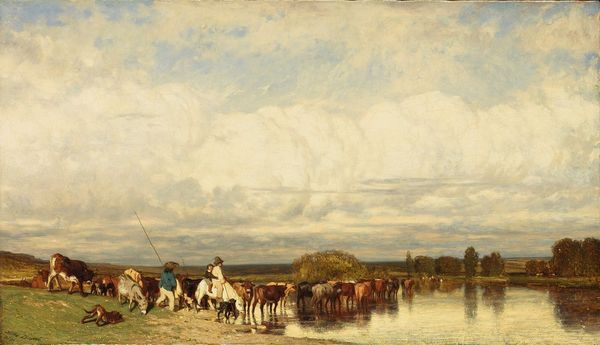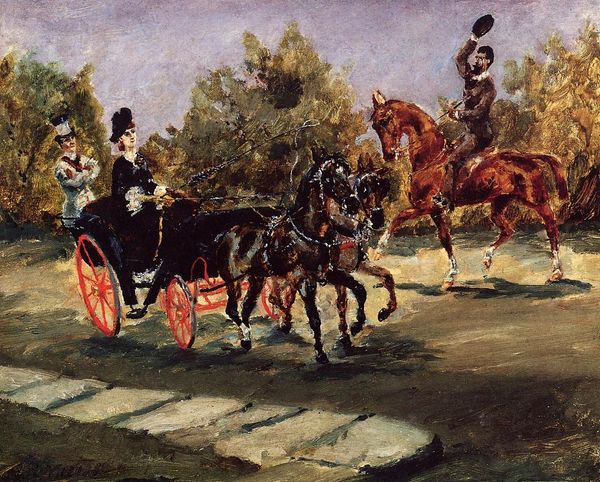
Copyright: Public domain
Editor: We’re looking at Rosa Bonheur’s “A Waggon and a Team of Horses,” painted in 1852 using oil paint. I’m immediately struck by the... the sheer labor in it. You can almost feel the weight these animals are pulling, and I wonder about their relationship to the landscape and the person driving them. What do you see in this piece? Curator: I see a carefully constructed image that reflects the 19th-century’s evolving relationship with nature and labor. Bonheur, as a woman artist achieving acclaim in a male-dominated field, presents a unique perspective. Consider the historical context: this is painted amidst the industrial revolution, where agrarian life was both romanticized and threatened. How does the scale and detail devoted to the animals contrast with the obscured figure driving them? Editor: Well, I suppose it does highlight the animals' importance. They are individualized, almost portraits, while the driver is just…there. Curator: Exactly. Bonheur elevates these working animals. This reflects a growing public fascination with animal anatomy and the "noble savage" trope. What statement do you think she might be making about the value of labor, both animal and human, in a rapidly changing society? Is this painting a celebration, a critique, or something in between? Editor: It feels celebratory, perhaps. The way the light catches the horses’ coats, it's so full of admiration, but I can definitely see a potential commentary. Something about the unseen human worker perhaps. Curator: Precisely. And the placement of this painting within art institutions of the time conferred a certain status on this subject matter. The “high art” treatment elevated rural scenes and working animals as worthy of serious consideration. What has been the most striking for you about understanding how the painting has shaped our perceptions? Editor: I never considered how much a painting like this could reveal about historical values beyond just being a pretty picture. Curator: Indeed. Art serves as a lens through which we can examine the social, cultural, and political forces shaping the past and influencing our present.
Comments
No comments
Be the first to comment and join the conversation on the ultimate creative platform.
